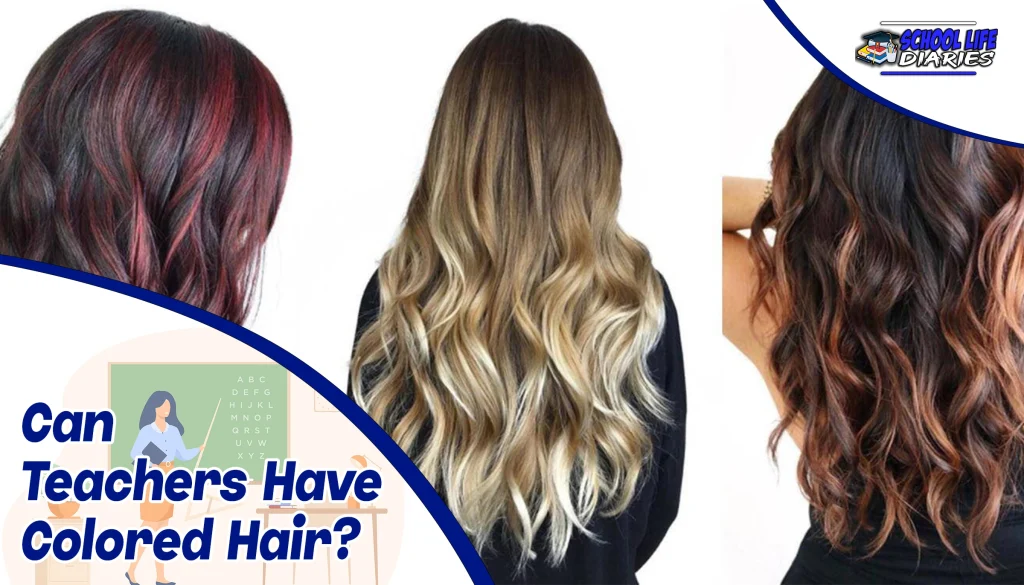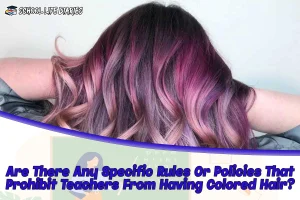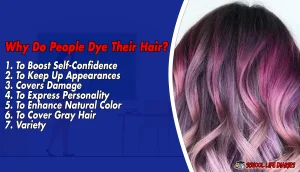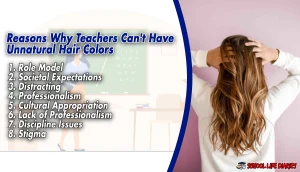Studying the effects of student-teacher dynamics can be a complex and complicated task. One question that seems to keep coming up, again and again, is whether teachers who have colored hairs explore more creative looks with their hair, particularly through colorful dyes.
While some may feel like teachers should adhere strictly to traditional norms when it comes to how they present themselves in front of students, others believe that lightening up on these rules could have positive impacts for both students and teachers alike.
In this blog post, we’ll take a look at the potential implications of introducing colored hair into the classroom from both sides by examining current research and perspectives as well as considering arguments in favor of changing conservative dress codes for contemporary educators.
What Is The General Attitude Towards Teachers With Colored Hair In Schools And Educational Institutions?
The general attitude towards teachers with colored hair can vary depending on the school or educational institution. Some schools may have strict dress codes that prohibit unconventional hairstyles, while others may have more lenient policies or no policies at all.
The attitudes of administrators, colleagues, and students can also play a role in how teachers with colored hair are perceived. Some may view it as a positive expression of individuality and creativity, while others may view it as unprofessional or distracting in the classroom.
There is no one-size-fits-all answer to this question, and the perception of teachers with colored hair can vary greatly depending on the specific circumstances and individuals involved.
Are There Any Specific Rules Or Policies That Prohibit Teachers From Having Colored Hair?
Whether or not there are specific rules or policies that prohibit teachers from having colored hair varies from school to school and district to district. Some schools and districts may have strict dress codes that require natural hair colors, while others may have more relaxed policies that allow for a range of hairstyles and colors.
It’s important for teachers to check their school or district’s dress code policy to see if there are any specific rules regarding hair color. It’s a good idea for teachers to check with their administrators before making any drastic changes to their appearance, including dyeing their hair a non-natural color, to ensure that they are in compliance with any policies or expectations.
How Can Teachers Ensure That Their Hair Color Choices Do Not Detract From Their Teaching Or Distract Students In The Classroom?
There are several ways teachers can ensure that their hair color choices do not detract from their teaching or distract students in the classroom. Teachers should make sure that their hair is well-maintained and neat, regardless of the color. They can also consider choosing a color that is not too bold or distracting, such as a subtle shade or highlights.
Teachers can communicate with their students about their hair color choices and explain the reasons behind them. It is important for teachers to remember that their professionalism and teaching abilities are not determined by their hair color and that they should always prioritize creating a positive and inclusive classroom environment.
Why Do People Dye Their Hair?
People dye their hair for a variety of reasons. Here are seven points to consider when exploring why people choose to cover their grey hair:
1. To Boost Self-Confidence:
Grey hair can be a reminder of the passing of time and can lead to feelings of decreased self-worth. Coloring the hair can help enhance confidence and give a feeling of renewed youthfulness.
2. To Keep Up Appearances:
Some people choose to color their hair as they feel it is necessary in order to keep up with society’s expectations. Covering grey hair can make an individual seem more youthful and vibrant, especially in professional settings.
3. Covers Damage:
Coloring the hair can help to cover up signs of damage, such as split ends or thinning. This is especially useful for those who do not wish to cut their hair in order to achieve a better look.
4. To Express Personality:
Dyeing the hair allows people to express their individual personalities and preferences through color. From light blondes to dark browns, the possibilities are endless.
5. To Enhance Natural Color:
Some people dye their hair to enhance their natural color or to make it appear fuller and thicker.
6. To Cover Gray Hair:
One of the most popular reasons why people choose to dye their hair is to cover up grays. This allows individuals to maintain a youthful look without having to continually pluck out every single gray hair!
7. Variety:
Dyeing the hair can provide an easy way to try different colors and styles without a major commitment. It allows people to experiment with their looks without taking huge risks or going through drastic changes. With so many options available, the possibilities are endless.
Reasons Why Teachers Can’t Have Unnatural Hair Colors
1. Role Model:
Teachers are responsible for helping to shape the future generation and as such, they are expected to be a role model for their students. Having unnatural hair colors can be seen as an example of behavior that could negatively influence young minds and lead them away from what society considers “normal”.
2. Societal Expectations:
There are certain societal expectations that come with the job of being a teacher, and many believe that having unnatural hair colors does not fit in with these expectations. This can make it difficult for teachers who want to express themselves through their hair color to do so without facing criticism from the community.
3. Distracting:
Unnatural hair colors can be distracting for students, as it takes away from their ability to focus on the lesson. This could lead to a drop in performance and ultimately, less knowledge being passed down from teacher to student.
4. Professionalism:
Unnatural hair colors can also be seen as unprofessional, which is something that teachers should strive to maintain. This can lead to a negative perception of the teacher and the school overall.
5. Cultural Appropriation:
Depending on the hair color chosen, it could be seen as cultural appropriation of another culture’s traditional looks. This could cause offense and misunderstanding among students and their families.
6. Lack of Professionalism:
Unnatural hair colors could lead to the teacher being taken less seriously, as people may assume. This could lead to a breakdown in communication between students and teachers, negatively affecting the learning process.
7. Discipline Issues:
Unnatural hair colors can be seen as a form of rebellion, which could lead to discipline issues in the classroom. Teachers should strive to maintain an atmosphere of respect and order in their classrooms.
8. Stigma:
There may be a stigma attached to teachers who have unnatural hair colors, as they may be viewed as less. This could lead to a negative perception of the teacher and their effectiveness in the classroom.
Related Article: The Best Teacher Shoes for All Day Comfort And Fashion
Conclusion:
Whether teachers can have colored hair or not is a complex and subjective issue that varies from institution to institution. While some schools may have strict dress codes and grooming policies that prohibit unconventional hair colors, others may embrace individual expression and creativity in their teachers.
It is up to the individual teacher to weigh the potential advantages and disadvantages of having colored hair and to ensure that their appearance does not detract from their effectiveness in the classroom.







